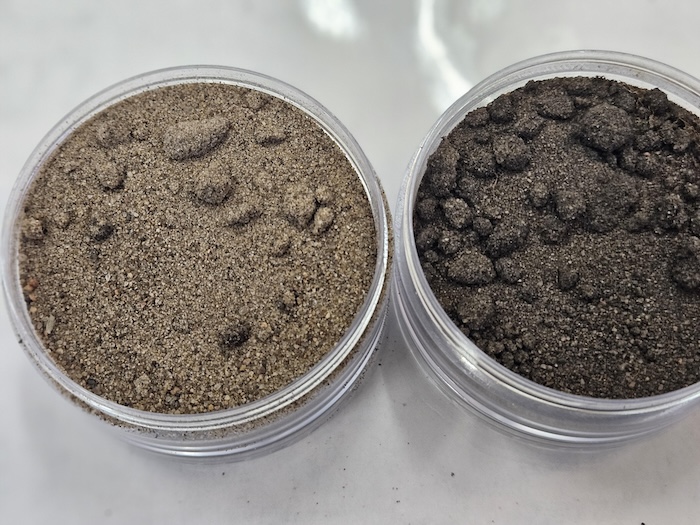As fall brings cooler temperatures, parts of North Dakota are experiencing low soil moisture, affecting both plants and soil microbes. Lower temperatures and moisture levels slow soil microbial activity and decrease microbial populations. Taking steps to build soil organic matter can help to maintain soil health and ensure sustainable farming practices, according to North Dakota State University Extension soil and soil health experts.
The role of microbes in soil health
Microbes play a vital role in decomposing crop residues, releasing nutrients that become available for plants. Although this process may be slow, it is key to releasing the nutrients tied up in the crop residue. As the nutrients are released through microbial activity, they become plant-available and may be taken up by crops or cover crops.
However, when crop residues have a high carbon-to-nitrogen (C:N) ratio, microbes may temporarily tie up nitrogen, a process known as nitrogen immobilization. The ideal microbial diet has a C:N ratio of 24:1 (24 parts carbon for every one part nitrogen).
“Soil microbes that decompose high C:N ratio residues, such as corn stalks, will tie up more nitrogen from the soil than crops with more balanced ratios, such as legume cover crops,” says Brady Goettl, NDSU Extension soil science specialist.
C:N ratios for common crops are 57:1 for corn, 80:1 for wheat, 37:1 for cereal rye and 25:1 for soybeans.
Practices that build soil organic matter
“Building soil organic matter and improving soil health is a long-term investment and requires consistent practices like having well-timed and purposeful tillage, planting cover crops and implementing crop rotation and diversity,” says Carlos Pires, Extension soil health specialist.
Tillage accelerates the breakdown of organic residues, potentially releasing carbon back into the atmosphere rather than retaining it in the soil. Avoiding soil tillage helps sequester soil organic matter in the soil, maintaining its health benefits.

The left soil sample has less soil organic matter than the right soil sample due to management. Photo by: NDSU
Planting cover crops can provide plant material for microbes and prevent nutrients, such as nitrogen, phosphorus and potassium from being leached or eroded by wind or water. Cover crops also increase organic residues, which become active soil organic matter. This active portion of soil organic matter is crucial for water movement and holding capacity.
Employing a strategy for crop rotation and diversity helps to ensure a balanced C:N ratio in residues, promoting efficient decomposition and preventing long-term nitrogen immobilization.
“Investing in soil organic matter also contributes to better resilience against flooding, erosion and drought, ensuring that soils remain productive for future generations,” says Chandler Gruener, Extension soil health specialist. “Ultimately, while the benefits of building organic matter may not be immediately visible, they create a foundation for sustainable farming and ecosystem health in the long run.”
Benefits of soil organic matter
Soil organic matter offers numerous benefits, including the following:
- Chemical: Enhancing nutrient retention and availability, increasing cation exchange capacity, and stabilizing soil pH.
- Physical: Improving soil structure, water infiltration and water-holding capacity; reducing compaction and surface crusting.
- Biological: Providing food for soil organisms, enhancing microbial diversity and accelerating nutrient cycling.
Types of soil organic matter
Soil organic matter can be classified based on the following decomposition levels:
- Active: Freshly dead organic residue which microbes are actively consuming. Makes up 5-10% of the total soil organic matter and forms within months to years. Most influenced by land management practices.
- Slow: Comprises 20-40% of total soil organic matter and takes years to decades to form.
- Stable: The greatest portion of total soil organic matter, 60-70%. Results from the decomposition of active and slow soil organic matter, creating the dark topsoil rich in organic matter.



